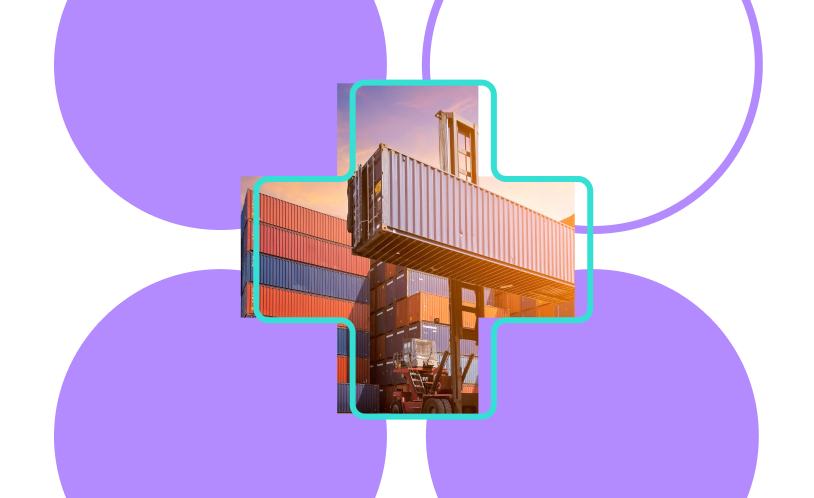Working with a freight forwarder? Here’s how to make the most of the relationship, avoid miscommunication, and keep your goods moving.
Highlights
- Focus on finding the right forwarder for your specific shipping needs
- Be clear with your forwarder about your shipping requirements as early as possible
- Think of your forwarder as your partner – you can rely on them and they can rely on you too
Importers and exporters know that choosing a good freight forwarder is crucial.
But not everyone invests in building a relationship with their forwarder.
That’s a missed opportunity. Because when you work together with your forwarder to set expectations and plan for eventualities, you’ll cut way back on the frustrating and expensive misunderstandings that shippers often face.
We sat down with Robert Khachatryan, CEO of Freight Right – a Freightos.com provider – to learn what works and what doesn’t when planning shipments with your freight forwarder.
Read on for his top tips for making the most of this crucial relationship.
Looking for quotes from vetted freight forwarders?
Tip 1: Find the best freight forwarder for you
When choosing a forwarder, it’s easy to assume that all logistics companies are created equal and that any company can handle your business.
The reality is that there’s a vast range of freight forwarding expertise and services.
Even small shippers require excellent coverage on their lanes, as well as basic visibility and tracking. If you ship closer to 10 shipments per month, you might need more specialized software, detailed tracking and reporting, AI-driven decision-making capabilities, or enhanced inventory visibility.
In particular, larger businesses often require last-mile insights, such as data on an SKU level: where items are, how many need to be loaded, and how many are arriving, as well as detailed delivery information: when containers are due to arrive at ports or warehouses, and the location of any empty containers.
Whatever your needs are, make sure to choose a freight forwarder that can handle them.
A note for smaller shippers: it might be tempting to choose the largest forwarder with the greatest data capability. The more data the better, right? But smaller businesses often don’t require the data that the largest forwarders can provide. Focusing on a forwarder that works for you can save you the cost of paying for data you don’t need.
Tip: any shipment on Freightos.com will receive visibility into:
- Estimated dates of pickup, departure, and arrival
- Main transportation milestones including actual pickup and departure
- Customs clearance milestones
- Estimated delivery
- Confirmation of delivery
Here’s an example of what that looks like on the Freightos.com shipment page:

Tip 2: Set expectations with your freight forwarder
When you begin working with a forwarder, take the time to walk through everything you need for your shipment. That way they can do a better job providing outstanding service.
Here are some steps to keep in mind:
Look out for effective onboarding
Once you choose a logistics provider, either on a platform like Freightos.com or by doing your own research, what comes next?
Hopefully – a proper onboarding process. A company should take the time to understand your shipping needs. Not even taking time to see if you’re a good fit might be a good sign that you aren’t.
Onboarding is even more important for larger companies.
[tip title=”“If you are importing a decent number of shipments and you want your freight forwarder to understand what you are doing and give you some kind of customized service but there’s no mention of an onboarding call, that’s a red flag.””] – Robert Khachatryan, CEO of Freight Right [/tip]
Here’s Robert’s take on the importance of onboarding:
Be clear about your requirements
Importers and exporters should take the time to discuss specific shipping requirements, including:
- What data must be available
- Which milestones along the shipping journey should be tracked
- Which documents must be accessible online
- How many shipments you typically have at once
- Whether you are shipping Amazon FBA
By bringing up your needs early, you have the best chance of your shipment going smoothly.
Be clear about your capabilities
Shippers also need to be clear about their side of the supply chain. For example, what are your warehouse hours? Is the warehouse equipped to receive the number and type of shipments you’re sending them?
Having these conversations in advance allows a freight forwarder to put together a proper operating procedure for you, and avoid misunderstandings later.
Find the best forwarder for you
Tip 3: Push for transparent pricing
When choosing a freight forwarder, you always want competitive shipping pricing.
But a forwarder should also be upfront about potential extra charges such as pre-pull, yard storage, and chassis.
For example, what happens if a warehouse can’t accept your goods and the forwarder needs to arrange storage? What happens if a container waits too long at the port? In some cases these scenarios are avoidable and in some cases they are not. Either way, you should know in advance how much they’ll cost.
Here’s Robert with an in-depth explanation of how important transparent pricing is:
https://api.vadoo.tv/iframe_test?id=PBfMFAUHg9ko5q0YmwrKrBBBCq1xyFcn
With full price transparency, you won’t encounter any unexpected charges later on. Instead, you’ll be able to make more informed decisions and even take steps to avoid these charges altogether. For instance, if you know the cost of storage versus the cost of arranging for extra warehouse hours, you can work with your forwarder to choose the option that makes the most sense for you.
When you make this decision together with your forwarder – so that the cost-benefit analysis is yours to own and you can decide which services are worth paying for – everyone wins.
Unavoidable fees
Some extra freight charges can’t be avoided. For example, customs exams are done at random, so you can’t predict when your goods will be chosen. They also vary in depth, which also affects the cost.
However, in those cases too the forwarder should tell you the costs upfront for services such as wire transfers or overnighting checks. They should also provide documentary backup of all the charges you received after the fact. This way you know what you paid for and why.
Your forwarder should not try to capitalize on your goods being chosen for an exam by charging extra hidden fees.
Here’s what that might look like:
https://api.vadoo.tv/iframe_test?id=541exjzm1k8lzaEBenzSGmtelZPNJfme
Pro-tip for Freightos.com shippers: Freightos.com has strict guidelines on what freight forwarders can charge customers beyond the freight quote. That means that any forwarder using the platform has agreed to these guidelines, and also is held accountable by Freightos.com and by customer ratings and reviews.
Tip 4: Take responsibility for your side of the supply chain operations
One of the benefits of working with a trusted freight forwarder is that you can rely on their help and expertise. But to get the most value and make sure goods move smoothly, shippers need to take responsibility for their own side of the supply chain.
A big part of this is building a reliable and flexible last-mile operation.
Build flexibility into your warehouse operations
Let’s say your warehouse closes at 5:00 pm and can’t extend hours for later delivery. This hard deadline means you’ll almost certainly run into problems: ports don’t always release goods on time, trucks can run late or break down, bad weather can slow down delivery.
Delays are an even bigger problem now due to the truck and driver shortages we’ve seen over the past few years.
When your warehouse can’t receive a shipment, your forwarder will need to make other plans for your goods until they can, which means extra fees for you.
You can mitigate these last-minute emergencies and costs by choosing warehouses with flexibility.
You may pay more upfront, but being able to avoid scrambles is often cheaper than dealing with unexpected charges.
Here’s Robert:
https://api.vadoo.tv/iframe_test?id=UnqDajzGYBlY9whW5aEqvAEn4VNXHWff
Tip 5: Work with your freight forwarder collaboratively
When it comes down to it, the best strategy for managing your freight forwarders is to see them as your partner.
If both sides provide transparency, set clear expectations, and troubleshoot together, you’ll have a much better importing or exporting experience,
In short, investing in your relationship with your freight forwarder means smoother shipping.



